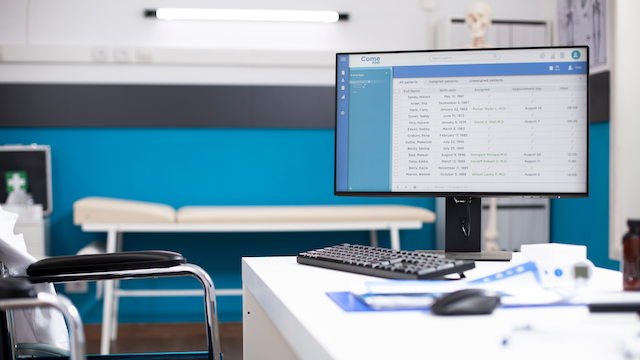Modern healthcare relies heavily on technology, and Electronic Health Records (EHR) systems are at the center of it all. While they’ve transformed patient care in numerous ways, EHR systems have also introduced a new set of challenges for clinicians. Documenting patient information, managing appointments, and navigating endless administrative workflows can feel overwhelming, taking valuable time away from what matters most – providing quality care to patients.
The good news? Automation is stepping in to change that. By streamlining repetitive administrative tasks, automation within EHR systems enables clinicians to cut down on inefficiencies and focus more on patient care. This blog post, the second in our series on reducing the administrative burden on clinicians, explores how automation is simplifying EHR workflows, offering practical insights for healthcare IT professionals and clinicians alike.
Read our article on streamlining patient documentation with Oracle Health EHR tools.
The growing role of automation in healthcare
The adoption of automation in healthcare IT has soared in recent years, driven by the need to reduce operational inefficiencies and improve workflows for overburdened clinicians. Automation leverages advanced algorithms and machine learning to perform repetitive tasks that would otherwise require manual intervention – and its potential in healthcare is immense.
What makes automation indispensable in healthcare systems today?
- Time savings
Automation eliminates the need for time-consuming manual data entry by seamlessly handling processes such as patient appointment scheduling, billing, and record updating.
- Enhanced clinician satisfaction
Automation steps in to alleviate some of the daily stressors clinicians face, allowing them to devote more time to practicing medicine than to documenting it.
- Reduced errors
By reducing reliance on human input, automation minimizes errors in administrative and clinical workflows, ensuring a higher level of accuracy and compliance.
- Actionable insights
Automated dashboards consolidate patient wellness trends and health metrics into visual summaries, giving clinicians quick access to the information needed for data-driven decisions.
Automation is no longer an optional upgrade – it’s becoming a necessity for healthcare organizations wanting to improve efficiency while staying competitive.
Automation features in Oracle Health EHR
Oracle Health EHR is now equipped with a range of automation features designed to make administrative workflows as seamless as possible. Below are some of the top automation functionalities transforming day-to-day clinical operations:
Auto-populating data fields
Manually entering patient information during every visit is tedious and prone to inconsistencies. Automation can auto-fill data fields based on existing records, reducing repetitive entry while maintaining accuracy.
For instance, when a returning patient’s details are updated – such as a new address or phone number – Oracle Health can extrapolate those changes to related encounters automatically.
Automation via voice: Oracle Health’s Clinical AI Agent
Oracle Health’s Clinical AI Agent is revolutionizing how healthcare professionals interact with patient data using voice technology. Tasks like updating records, scheduling appointments, and accessing lab results can now be completed effortlessly with voice commands. This innovation saves time, improves efficiency, and enhances accuracy in patient care.
Intelligent appointment scheduling
Missed or improperly scheduled appointments are a common pain point for clinics. Oracle Health leverages predictive analytics to schedule appointments based on patient needs, provider availability, and clinic capacity. Automation also ensures patients receive appointment reminders via text or email. This allows for a more efficient flow of patients while reducing the likelihood of no-shows or last-minute cancellations.
Automated coding and billing
With built-in automation tools, clinicians can easily code and bill for services rendered without having to navigate complicated coding guidelines. These tools streamline the billing process by automatically applying the correct codes based on the services provided, reducing the risk of human error. This not only saves valuable time that can be redirected toward patient care but also ensures accurate billing, minimizing claim rejections and delays in reimbursement.
Additionally, the tools help maintain compliance with ever-evolving regulations, giving clinicians peace of mind and allowing them to focus on delivering quality care.
With these and other automation tools and features, Oracle Health EHR empowers clinicians to optimize their workflows, promote patient-centric care, and achieve better outcomes.
Think of automation as a supportive teammate for clinicians, tackling behind-the-scenes tasks so they can focus on what they do best. This means fewer 12-hour days spent on administrative catch-up and more time actually practicing medicine.
Practical tips for implementing EHR automation
For healthcare IT professionals and medical administrators, implementing automation into an existing EHR system may feel challenging. Here’s how to get started effectively:
- Evaluate your needs
Assess which processes are the most time-consuming and identify automation solutions tailored to addressing them.
- Train your team
Ensure all staff members understand how to maximize the benefits of automated EHR features.
- Start small
Test automation with a single workflow or feature before expanding its use across the organization.
- Get expert support
Put your time, budget and resources to best use by bringing on board an Oracle Health EHR consultant on a temporary basis to efficiently and effectively set up the automation you require.
- Stay engaged
Regularly review how automation impacts efficiency and patient outcomes, making adjustments as needed.
Proactive planning and staff buy-in will go a long way toward streamlining any transition to EHR automation.
Empower your clinicians with automation
The adoption of EHR automation is no longer just a value add – it’s a critical step in freeing clinicians from the weight of administrative tasks and allowing them to focus on what truly matters. Through features like auto-populating data fields, appointment scheduling, and lab result updates, clinicians can save time and work smarter, not harder.
Are you ready to explore the potential benefits of EHR automation for your healthcare facility? Stay ahead of the curve and transform your workflows today with EHR Enhancify.



